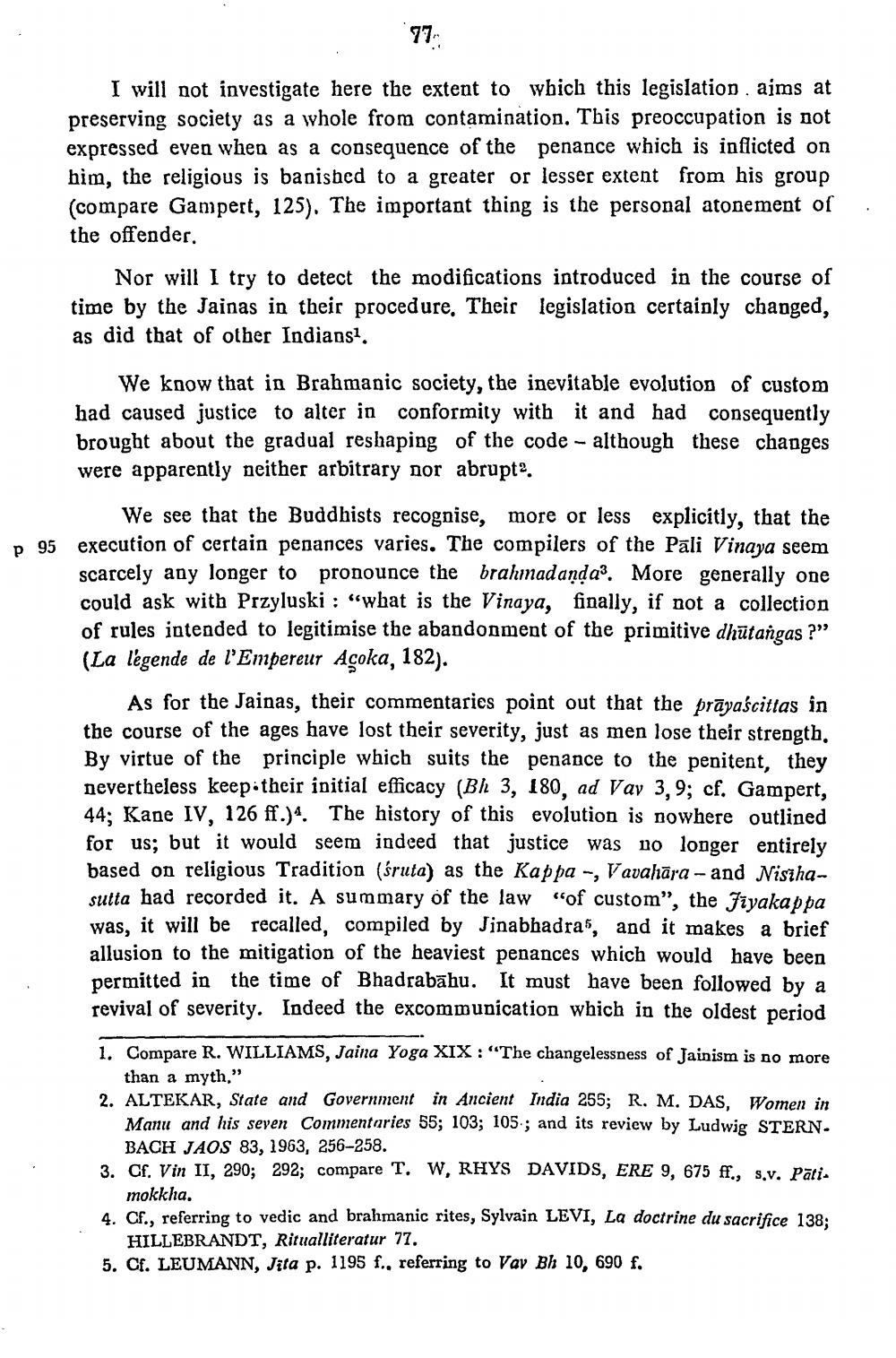________________
77
I will not investigate here the extent to which this legislation, aims at preserving society as a whole from contamination. This preoccupation is not expressed even when as a consequence of the penance which is inflicted on him, the religious is banished to a greater or lesser extent from his group (compare Gampert, 125). The important thing is the personal atonement of the offender.
Nor will I try to detect the modifications introduced in the course of time by the Jainas in their procedure. Their legislation certainly changed, as did that of other Indians?
We know that in Brahmanic society, the inevitable evolution of custom had caused justice to alter in conformity with it and had consequently brought about the gradual reshaping of the code - although these changes were apparently neither arbitrary nor abrupta.
We see that the Buddhists recognise, more or less explicitly, that the 95 execution of certain penances varies. The compilers of the Pali Vinaya seem
scarcely any longer to pronounce the brahmadanda3. More generally one could ask with Przyluski : "what is the Vinaya, finally, if not a collection of rules intended to legitimise the abandonment of the primitive dhūtangas ?” (La légende de l'Empereur Açoka, 182).
As for the Jainas, their commentaries point out that the prāyaścittas in the course of the ages have lost their severity, just as men lose their strength, By virtue of the principle which suits the penance to the penitent, they nevertheless keep their initial efficacy (Bh 3, 180, ad Vay 3,9; cf. Gampert, 44: Kane IV, 126 ff.). The history of this evolution is nowhere outlined for us; but it would seem indeed that justice was 110 longer entirely based on religious Tradition (śruta) as the Kappa -, Vavassāra - and Nisihasutta had recorded it. A summary of the law "of custom", the fiyakappa was, it will be recalled, compiled by Jinabhadras, and it makes a brief allusion to the mitigation of the heaviest penances which would have been permitted in the time of Bhadrabāhu. It must have been followed by a revival of severity. Indeed the excommunication which in the oldest period
1. Compare R. WILLIAMS, Jaina Yoga XIX : "The changelessness of Jainism is no more
than a myth." 2. ALTEKAR, State and Government in Ancient India 255; R. M. DAS, Women in
Manu and his seven Commentaries 55; 103; 105.; and its review by Ludwig STERN.
BACH JAOS 83, 1963, 256-258. 3. Cf. Vin II, 290; 292; compare T. W, RHYS DAVIDS, ERE 9, 675 ff., s.v. patia
mokkha. 4. Cf., referring to vedic and brahmanic rites, Sylvain LEVI, La doctrine du sacrifice 138;
HILLEBRANDT, Ritualliteratur 77. 5. Cf. LEUMANN, Jita p. 1195 f., referring to Vay Bh 10, 690 f.




